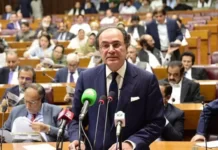The United States will lower tariffs on low-value goods imported from China, marking a significant easing in trade tensions between the two global economic powers.
A White House executive order issued Monday slashed the “de minimis” tariff rate from 120% to 54% for packages valued at up to $800, effective May 14, 2025. A flat fee of $100 per package remains an alternative option for carriers.
The move follows weekend talks in Geneva, where U.S. and Chinese officials reached an agreement to roll back many of the tariffs imposed since 2018. Although the de minimis adjustment was not explicitly mentioned in the Geneva joint statement, the White House order formalized it as part of the broader trade de-escalation.
The de minimis exemption has played a crucial role in the rise of cross-border e-commerce, allowing packages under $800 to enter the U.S. duty-free. Over 90% of these shipments originate from China, with platforms like Shein, Temu (owned by PDD Holdings), and AliExpress heavily relying on the rule. The recent tariff hike imposed in February by President Donald Trump ended that exemption, citing misuse by e-commerce firms and illicit traffickers.
Industry experts say the reduction offers temporary relief to online retailers, enabling them to manage costs and adjust logistics. Shein, for instance, which depends on air freight for its rapid product turnover, may continue paying the 54% tariff to maintain delivery speed. Temu and others may shift more shipments to ocean freight or U.S. warehouses during this grace period.
The $800 threshold in the U.S. far exceeds that of the EU, which caps de minimis at €150. Critics in Congress from both parties have labeled the U.S. policy a loophole, arguing it floods the market with cheap goods and undermines domestic industries.
China exported $240 billion in goods under de minimis globally last year, equivalent to 7% of its exports and 1.3% of GDP. Despite the tariff cut, many Chinese sellers may look to diversify markets, given increasing trade unpredictability with the U.S.
























